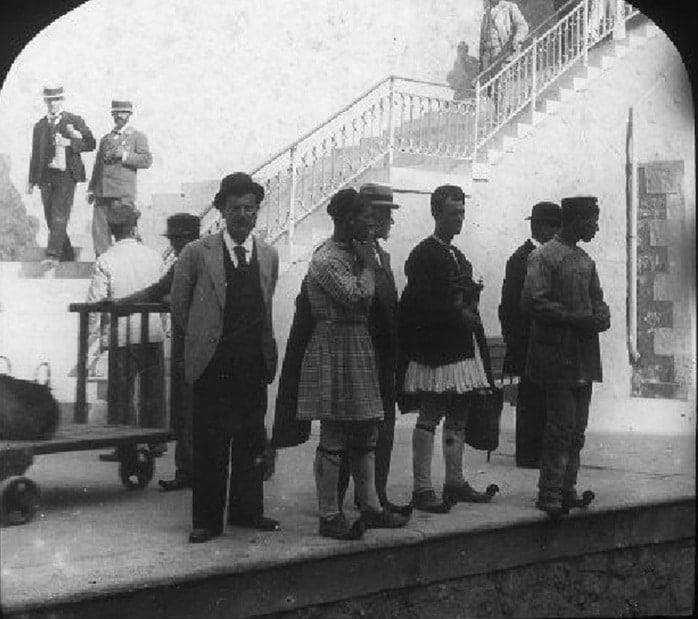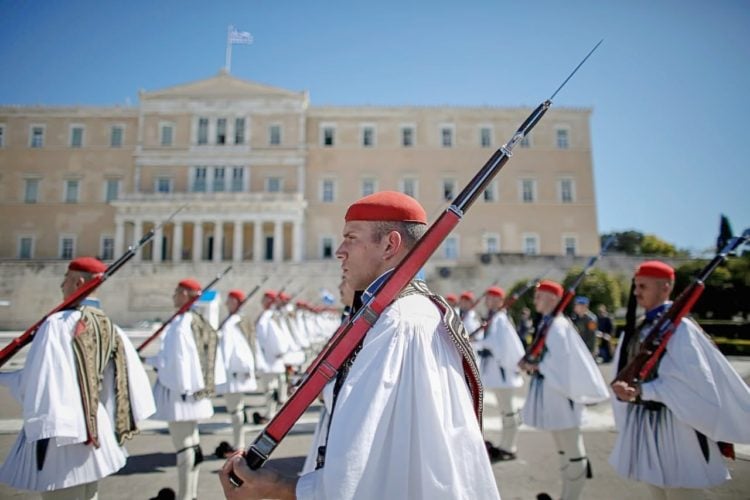
This intriguing photograph, captured at Monastiraki station in early 20th-century Athens, vividly illustrates the fascinating contrast in men’s attire: Fustanella-clad gentlemen stand alongside those in Western dress as they await the train.
The photo is a snapshot of a society in transition. While some are clad in the “modern” Western suits and hats that were becoming increasingly common across Europe, others proudly wear the traditional fustanella, a pleated skirt-like garment that remains an iconic symbol of Greek identity.
The presence of both traditional and Western dress highlights the unique position of Greece in the early 20th century. Having gained independence from Ottoman rule in 1830, the young Greek state was actively forging its national identity while simultaneously engaging with broader European trends.

Greece’s revolutionary fighters wore the fustanella
The fustanella itself, with its roots tracing back centuries, had a particularly significant role in this national awakening. In the 1820s, it became a principal visual symbol of Philhellenism, attracting widespread support for the Greek cause.
During the Greek War of Independence, it was notably worn by the revolutionary fighters, and at that time its notoriety as a symbol of male bravery and heroism grew considerably across the Ottoman Empire and spread throughout Europe.
Following Greek independence, the fustanella and its accompanying embroidered waistcoats and jackets were adopted by the nascent Greek army. In 1835, it was proclaimed the official court costume and eventually became the Greek national dress, further cementing its place as a powerful national symbol. For many, wearing the fustanella was a declaration of continuity with their Hellenic heritage and a visible expression of their national pride.

Today, the fustanella is famously worn by the Evzones of the Presidential Guard, an elite ceremonial unit whose modern establishment dates back to December 12, 1868.
Monastiraki: A vibrant heart of Athens in the early 1900s
Monastiraki, even then, was a vibrant heart of Athens, a bustling square and marketplace that served as a nexus of commerce and daily life. Its name, meaning “small monastery,” derives from the Pantanassa Monastery, which still stands in the square today.
As a major transportation hub, Monastiraki station connected the city’s inhabitants, facilitating the flow of people and goods. The railway itself was a relatively new marvel, symbolizing progress and connecting previously disparate parts of the Greek capital.
The scene at Monastiraki, therefore, is more than just people waiting for a train. The juxtaposition of the timeless fustanella against the backdrop of modern transportation and Western fashion underscores a dynamic period in Greek history – a time when tradition and modernity walked hand in hand on the bustling platforms of Athens.


